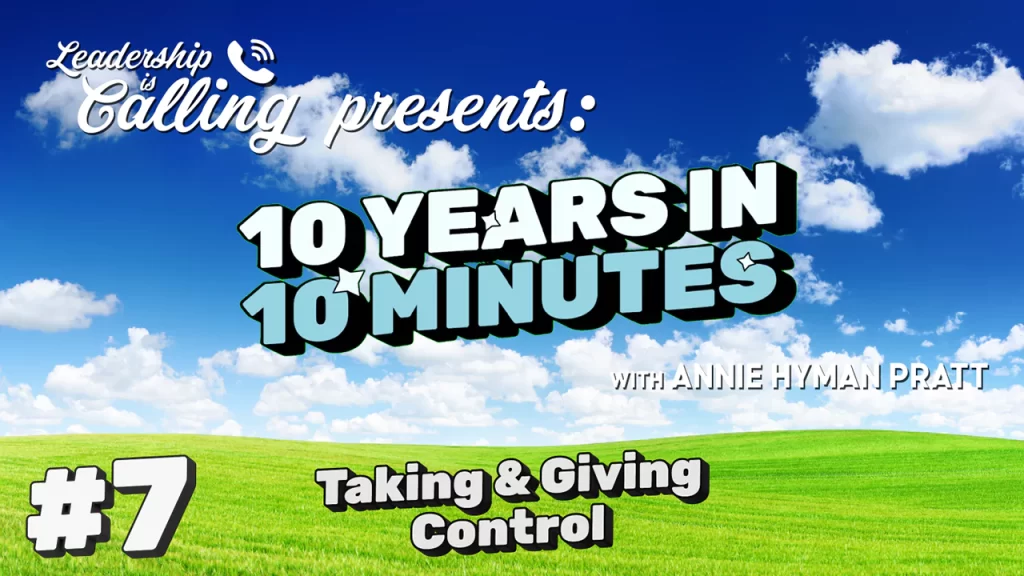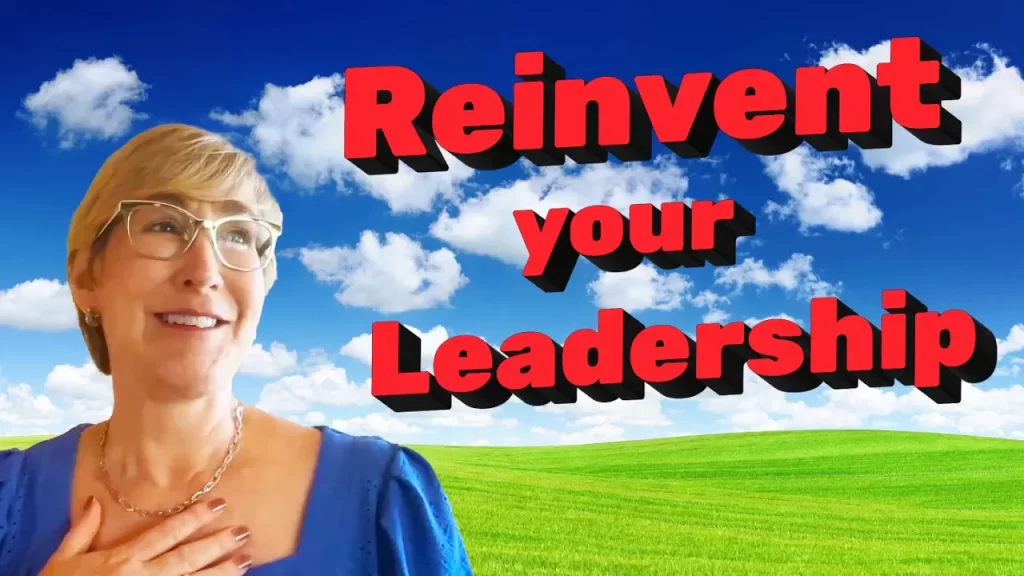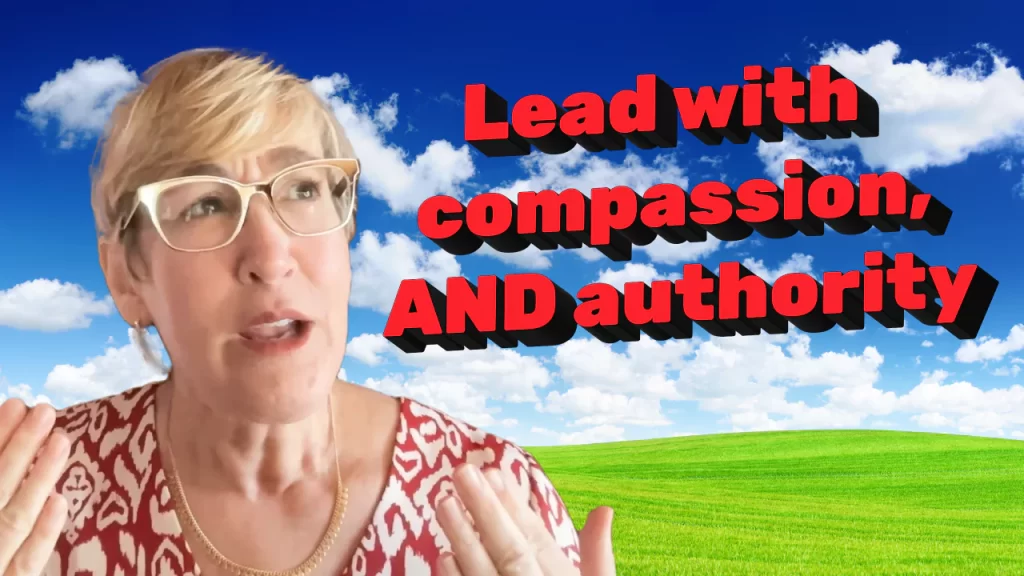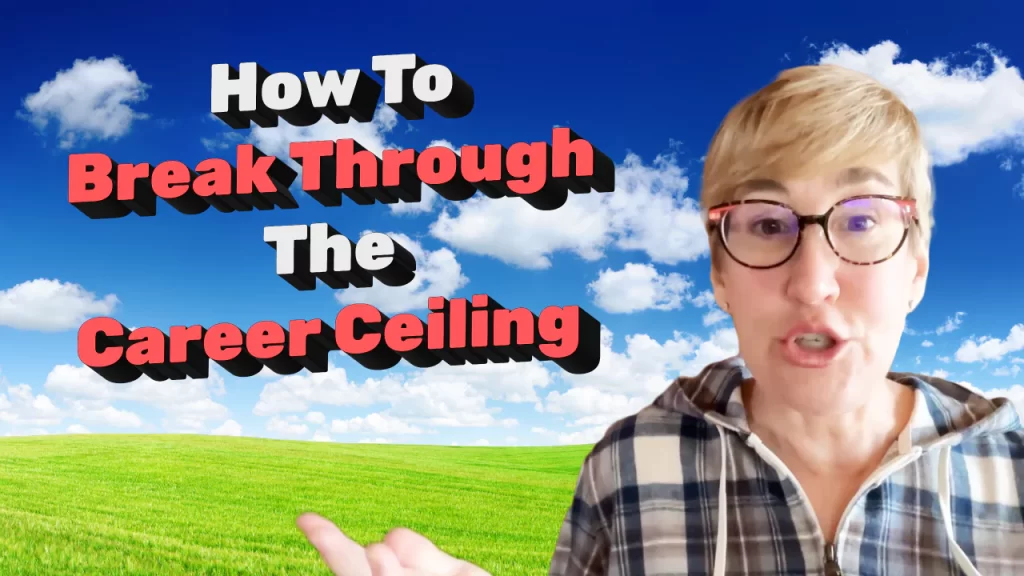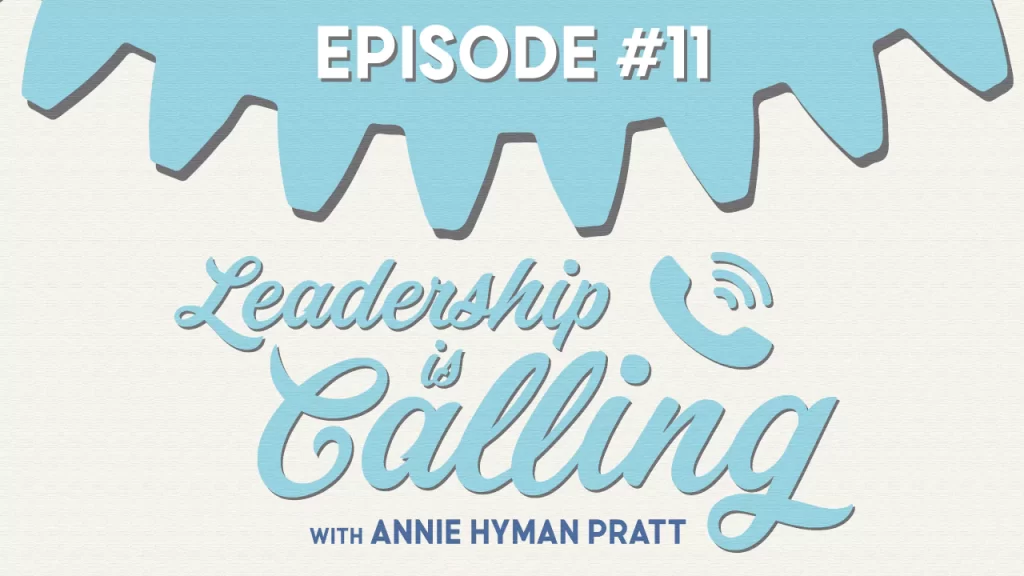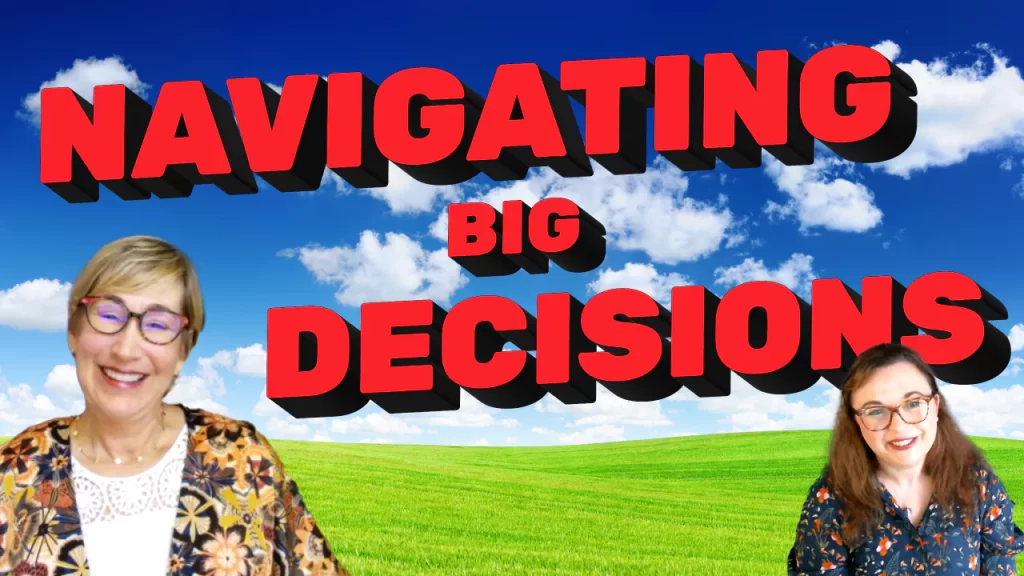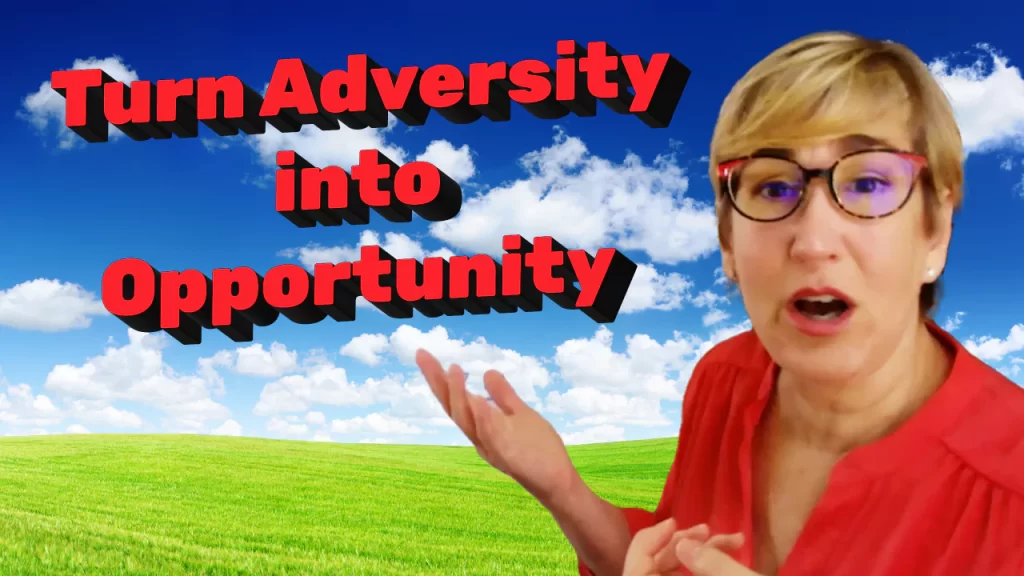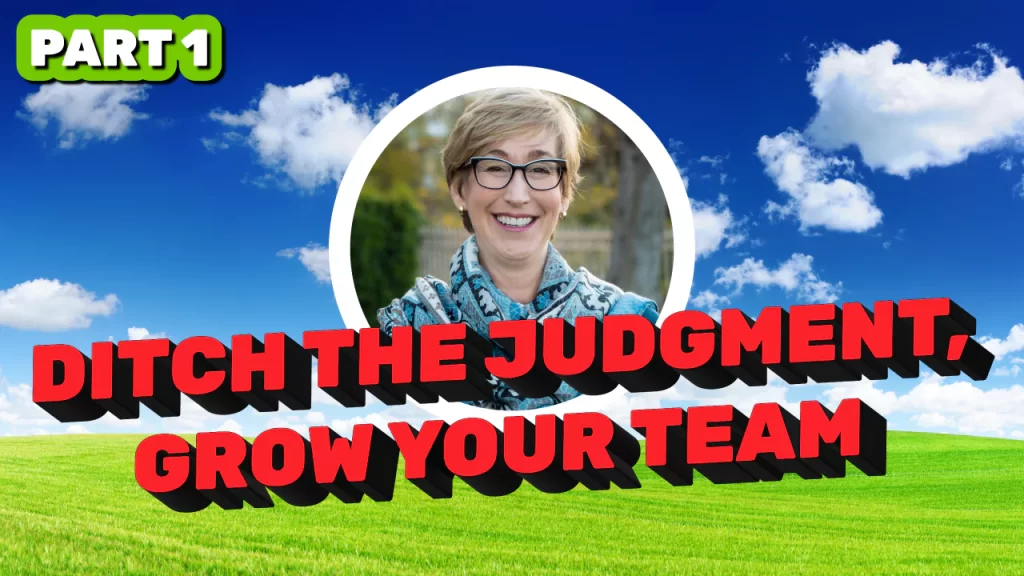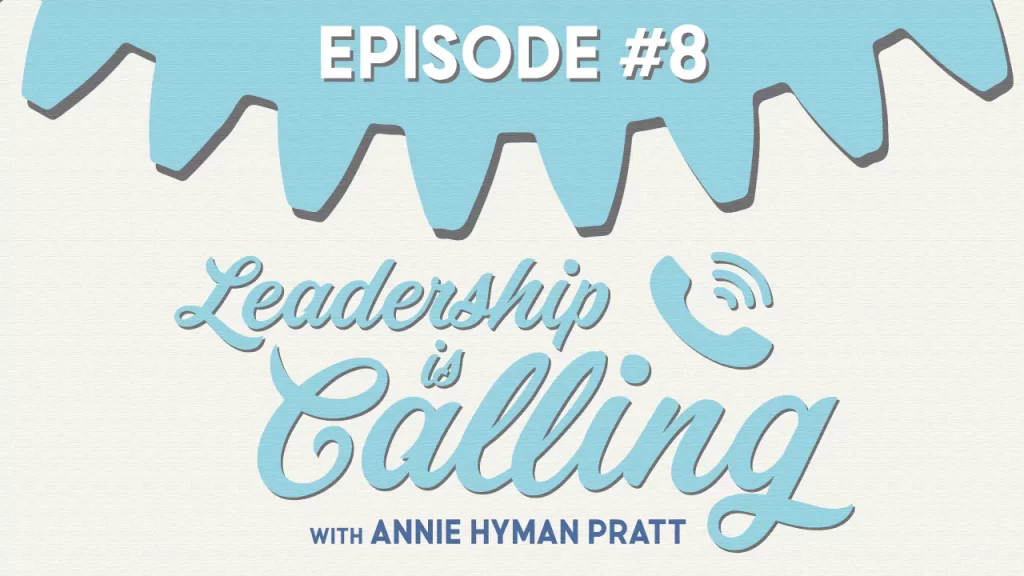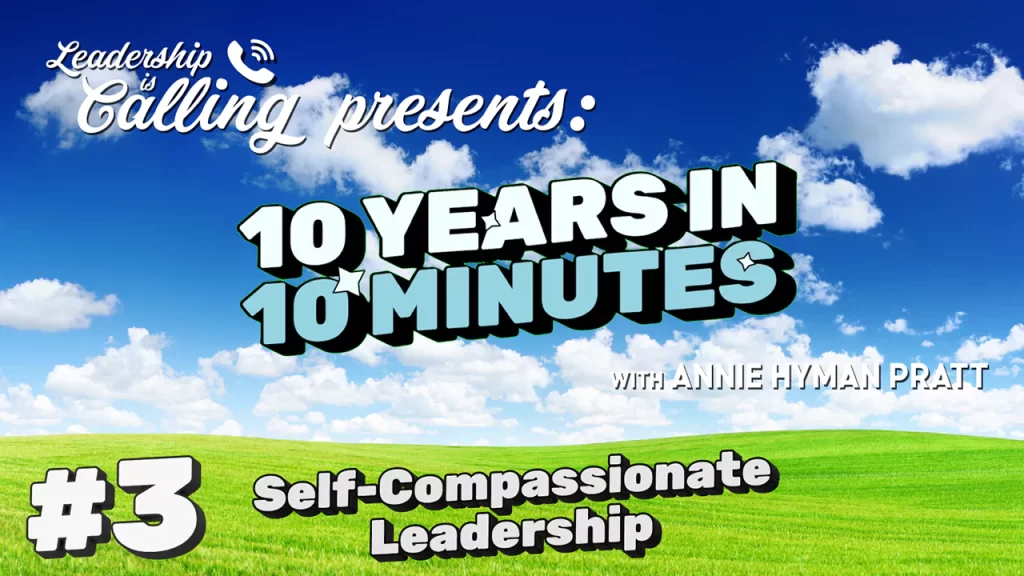Episode #04: You’re Doing It Wrong: Why Judgment Clouds Your Best Thinking
Leadership is Calling Episode #4
Annie Hyman Pratt
- Description
- Transcript
You’re Doing It Wrong: Why Judgment Clouds Your Best Thinking
“We want to free you from the trap of judgment so you can lead collaboratively and effectively.” -Annie
In this episode of Leadership is Calling, Annie dives into why judgment can cloud our best thinking and limit leadership potential. She outlines the problems with judging situations as simply right/wrong or good/bad, and shares tangible techniques to release judgment and lead with more compassion and effectiveness.
Learn how to “Release Judgment to Compassion” so that you can…
- Resolve the things that trigger you into a self-protective so you can solve for the future.
- Use step 4 of the CCORE process to 10x your ability to get back into Self-Leadership quickly.
- Drop judgments that you think of as right or wrong / good or bad so that you can see a bigger picture.
- Ask yourself 2 key questions to determine whether you are judging or not and what to do instead.
Key Points
- Judgment narrows our thinking and traps us in unhelpful perspectives.
- Releasing judgment allows us to see situations more clearly with compassion.
- Techniques like the “crystal ball test” help release judgment of others’ actions.
- Dropping self-judgment helps improve confidence and performance.
- Releasing judgment creates space for collaborative, effective leadership.
Related Resources
Leadership Skills: Compassionate Leadership
Leadership Development Articles: Vulnerability Is Key to Connection And Success | Communication Skills Ramp Up Collaboration
Downloadable Leadership Tool: The 5-Day Appreciation Journal: A Culture of Caring

Auto-Generated Transcript – unedited version
You’re Doing It Wrong: Why Judgment Clouds Your Best Thinking
You’re Doing It Wrong: Why Judgment Clouds Your Best Thinking
Leadership is Calling is a podcast that brings you leadership and business tips anchored in the people part. I’m Annie Hyman Pratt, CEO and founder of Leading Edge Teams.
Hey everyone, this is Annie Hyman Pratt with the Leadership is Calling podcast, and in one of our last episodes we talked about the core process, which is an inner process of steps where you can resolve the issues or the situations that trigger you – that trigger you into what we call self-protection, that trigger you into an emotionally reactive place – because being in an emotionally reactive place is completely counterproductive to doing good work, to being a great leader who supports, you know, others and themselves to achieve business outcomes. Leadership is all about that.
Okay, so there is a step in this core process, and if you – I’m not going to run through the whole core process today – but if you want to know more about it, we have several ways. So you can grab the book, you can go to the website, and I believe we have a new opt-in to walk you through the steps of the core process.
Okay, so the thing about the core process is that we want you to learn all the steps because that’s the best way to resolve, kind of, you know, for the future, resolve the things that trigger you into an emotionally reactive place.
Even though there are five steps in that process, the thing is, any one of those steps is actually really powerful even on its own. And there is one step that I think is extraordinarily powerful that sort of like 10Xs the power of all the other steps when you can really learn how to do it. To me, it is the most important part for humans to truly get neutral, to come back into a place of “I’m okay in this,” and therefore I can see all the options. I can think better. I can stop worrying about myself and really focus on what, you know, what needs to be done here, how I can help others.
That step is the R step, and it stands for release judgment to compassion.
Judgment is kind of a funny thing because in business we do a lot of judging, and the kind of judging that we want to do – like when people say “that person has good judgment” – what we’re really saying is they have really good evaluation skills. It really means that they are good at looking at a situation and, you know, understanding the parts enough to know this is going in a way that will achieve the outcome, or this is not going in a way that will achieve the outcome.
Where the judgment comes is when we put a kind of a, a values-based or a morality on it. Meaning, a judgment is when we take a situation or a set of facts and instead of it just being the facts, it’s like we’re going to add on: it’s good or bad, right or wrong, like it should be this way, you know, and it’s not, or it shouldn’t be this way and it is. So that’s when the situation starts to, it’s like, it tangles up inside of us. It’s like it becomes a thing that we can’t help but become self-protective in, because making those kinds of judgments – right or wrong, good or bad – that puts us sort of, you know, in this danger spot with respect to our world.
The thing is, is in today’s day and age it’s not true. In, you know, in a, in a much older time we needed to be figuring out what’s good or bad immediately so that we, you know, didn’t eat poisonous berries, so that we didn’t miss, you know, looking ahead for rattlesnakes – you know, all of that. But in today’s day and age we are rarely worried about our physical well-being, and we’re wired – but we’re wired for that. We’re not really wired for the kind of world where we have to interact with a lot of different people, to, you know, to take in a lot of complex information, lots of different variables, make sense of a picture, and choose the right thing to do from it all.
So we need to be in a good place, and that means that we have to drop judgments of situations that we’re thinking are right or wrong, good or bad, because we won’t see all the choices when we put a judgment on it. We narrow how we’re thinking of a situation, and we can no longer have a good perspective on it. And you can, if you think about maybe your, you know, your own judgments that you’ve carried, or maybe you have a family member or a good friend and you know they have a really hard judgment about something that you don’t, and you’re like, “Wow, they don’t see that. You know, they, the way they see that is hurting their ability to achieve whatever it is – their ability to achieve a lot more friends, their ability to get along better with their co-workers and get a promotion at work, their ability to – oh my gosh – something as simple as their ability to stick to a diet or an eating plan.”
It is very well known that people who are self-critical about themselves on a diet have a much worse chance of sticking to that diet than a person who is much more self-forgiving. And counter-intuitive but super, super true.
Okay, so I want to give an example of release judgment in the workplace and how it can really make a big difference for somebody’s not only their performance, but their own well-being, their ability to show up consistently and do great work instead of, you know, going into a place where they are constantly thinking “this is right, this is wrong” and constantly having to figure out “Am I okay?” That’s the problem with the right-wrong thing. It’s like it automatically goes to “Am I okay?”, and then we become self-obsessed. Then we can’t see things clearly, we think poorly, etc.
Okay, so I was recently working with a leader, a cross-functional leader. She was head of a marketing department and – and she was fairly new. And one of the things that she was really struggling with was she would show up to these meetings where people would be presenting – other leaders would be presenting ideas for things that would impact marketing or their ideas for what should happen on certain products that she would then be had the marketing for.
And her experience was that whenever they brought something forward, she would immediately kind of identify what was wrong with it. Okay, and she’s certainly had a lot of prior experience, but she didn’t have a lot of prior experience at this particular company. And so she would say what was wrong with it in the best way that she could, but after a few meetings she started to feel like “Oh wait a minute, I – I’m always negative. I’m always saying what’s wrong. I think I’m going to be perceived as, you know, a complainer. I think I’m, you know, I think I’m maybe creating a reputation for myself that I am, you know, I always think I know the best thing, and I just got here,” right? Something like that.
So I, I think you know there’s probably a lot of people out there who can really relate to being in a situation or in some circumstances where you kind of feel like you’re right and everybody else is wrong most of the time. Like it’s hard, it’s a hard situation.
So to change that situation, what would be typical for so many people is to just go to the place of “Okay let me, let me figure out how to just pick my battles. I am going to stuff it. I am going to tell myself that I’m just not going to complain. I’m not going to tell them what’s wrong. I’ll just live with it. I’ll try to fix what I can later,” etc.
Okay, so that is one way to deal with it, but it is kind of a disaster when you start to actually implement that because what happens is you aren’t really aligned. So then you’re, you know, if you’re that person you’re sitting in the meeting going “I don’t – we’re doing what’s best for the business here,” and but “I don’t feel like I can say anything so I’m not really sure what to do. I don’t even think I’m going to be successful. I don’t even know if I like it here anymore,” you know? It goes down this place of you’re, you know, you can’t bring your value, you don’t feel valued, you are left in this place of constantly trying to cope with a situation that is, you know, that you don’t think is the right one, that you think should be going differently. And that is a giant, giant problem.
You maybe can do it for, you know, a day or two, and then it starts to really impact you and everybody else on the team super negatively – worse than you having the reputation of being a complainer.
Okay, so the good news is you don’t have to have either. There is another answer to this, and it’s a, it’s a counter-intuitive one because what we’re looking for here is a whole different way to relate to this situation because if you can relate better to this situation you can approach it differently. You can reproach it in a way that actually could get the information you need to get across, and do it in a way that is positive for everybody.
Okay, so how, how can that happen? The very, very first thing is we’ve got to learn to release the judgments. Okay, and in this example there’s a few judgments going on.
The first judgment is “They’re doing it wrong!” Okay, “My co-workers are doing the wrong thing.” That’s – it’s not just “They’re doing a thing that might not achieve the outcome.” Okay, that’s – that’s a factual way of looking at it. “They’re doing a thing, it might not achieve the outcome.” But this idea of “They’re doing it wrong” and that “They aren’t listening to me,” that “They should, you know, they aren’t respecting the advice that I bring from my, you know, from my background of lots and lots of great experience,” right? It can very quickly feel almost disrespectful that they’re not taking my advice and that they’re therefore doing it wrong.
Okay, that’s the first judgment. The second judgment or, I – first kind of set a judgment, sir. Okay, the second kind of big judgment is “I – I’m a complainer,” or like “I, you know, I am saying all these things in a way that makes me a negative complainer,” and that’s a bad thing. Obviously. So that’s, you know, it might seem factual but it’s not because who’s to say what anybody perceives you as? First of all, it’s all situational, relative, you know? I might be perceived as a complainer in some situations, not in other situations. It’s like that’s, that’s a, that’s a very judgmental evaluation. It’s not just “I’m saying things that I think won’t work in this picture to get the outcome.” Okay, that’s the factual thing. And I say those things a lot of times. Okay, and that’s just the facts.
When you say “Ergo, I’m a complainer,” that’s when we get a judgment on it.
So those are two judgments that we want to let go of.
The first judgment about “They’re doing it wrong!” – “They’re not listening to me.” There’s a few, how I think of it as like “watchamacallit,” there’s a few techniques – great! Okay, there’s a few techniques to help release judgments. One of the first ones I think of as the crystal ball or the wizard test. Meaning, when I’m evaluating or when I’m judging a situation as “They’re doing it wrong!” – do I have a crystal ball to know that’s true, to know that the way they’re doing it is definitely a hundred percent gonna turn out so much worse than the way I would have done it?
Okay, so considering none of us have a crystal ball, I think most of us can easily come to the place of like “No, that’s not true. We actually don’t know because the way I was thinking about doing it, we don’t even know if that could have worked at all. We didn’t talk a lot about it. We didn’t get all the way through to, you know, what would the plan be? We didn’t talk about the risks and challenges. I, you know, the next thing is I’m pretty new here. I’m not even totally certain how it would go. There might be a lot of things I don’t know about this situation. There might be some things that they do know about this situation.”
So we don’t know if it’s going to turn out a lot worse than it would have turned out if we had done the thing that I think, you know, based on my advice, something like that. We don’t have a crystal ball. The other thing is, we’re always less in control of what might happen in it, that nothing is a guarantee. Everything is a, you know, a risk. We might have a product launch set up in a way that we think is just perfectly excellent, right? And then – and then the flood might happen and, you know, in the, in our market that we really wanted people to be available to buy things. I don’t know, it could have a brownout, right? Facebook could change its platform that day, you know? We just don’t know. Things can happen that are completely out of our control.
And so even if we are pretty sure that, you know, feeling pretty sure that this would have been better or different, we have to remember there are so many times that unexpectedly things go way different than we thought. So we don’t have a crystal ball. We can’t say this is definitely bad or wrong, the way they’re going to do it. We don’t know. We don’t know way too much that we don’t know about to make that kind of judgment, right?
We know there are some things we know. We know we, we won’t, we won’t get tested, I suppose. We know that, you know, we, we know that we didn’t get to talk through our plan all the way to the end. Okay, but we don’t know how it would have turned out. So we could release that judgment of “They’re doing it wrong.” We just don’t know that. They could be doing it perfectly right for the situation with all a bunch of variables that we don’t know about that are going on.
Okay, so super, super important as a way to drop that judgment, right?
Okay, let’s take the second judgment. The second judgment is, you know, that “I’m a complainer” and that’s “bad or wrong.” “I’m being perceived as a complainer and that’s bad or wrong.”
Okay, so here’s the thing: we again, we are not other people. We have so much less understanding of how we’re being perceived, especially in situations that we’re fairly new in, than we might think we have. This idea in our head that if, you know, if everybody out there was me, I would be perceiving me as a complainer. But guess what? Guess what? They’re not you. They’re not you. They have their own brains. They have their own ways of thinking about things. And they aren’t evaluating things or judging things without a bigger context.
So nobody is in that room thinking “This person has zero experience before they came here.” Every one of those people has been new in the company at one point or another, right? Everybody is also aware of the fact that they’re not the, you know, the top marketing expert in the company. They, most of them, I’m sure at least if not all of them, know how difficult it is to bring ideas forward when they are different from the ones being proposed. Like, you know, as a human being at work we’ve all had the experience of getting ideas, you know, where we put them forward and people are like “No thanks.” Like we’ve all had that experience. It’s not easy. It doesn’t make it so that this person is automatically a complainer.
We don’t even know if they’re thinking that. And by the way, for the person that wants to bring this forward, we have to, you know, we, we want that person to be thinking about themselves like “Well, what’s my intention here? My intention here actually isn’t to complain,” right? “And why would I be perceiving it that way? Like, my intention here is to bring forward something that I think will get a better outcome for everybody.” That’s my big intention here. And who’s to say that everybody doesn’t see that as well?
But everybody doesn’t see that. Lots of people may be seeing it. Maybe all of them are seeing that exactly. Nobody has said to this person “Hey, think you’re a complainer,” right? Nobody has said that. There’s been no conflict in the meetings. There’s, you know, there’s been – frankly there’s been no indications that anybody is unhappy with the way this new leader is interacting with them at all. In fact, when we objectively look at it, there’s been a lot of compliments and there’s been some things the leader brought forward that people have really thanked them for. Not all, but definitely some, where the rest of the team was like “Oh my gosh, we’re so glad you brought that forward.”
So there’s a really good example of something like “Hey, this – there’s, there’s, there’s, there’s – there’s not a strong enough basis here even – I’m not a villain or a victim.” That’s kind of how I think of this as a villain-victim test. “I’m not being bad and trying to hurt everybody. They’re not being bad and trying to hurt me. We’re all just trying to do our job and I’m doing my best to do my job and I know my intention is really good. And I, you know, I imagine if I think about it for a moment, I imagine other people struggle with this exact same thing too,” right?
It’s like we’re all human. We can have compassion for “Oh my gosh, it’s hard to be new. It’s hard to bring forward your ideas.” But once this leader was able to drop that judgment of “I, you know, I think I’m being a big complainer here,” or the second judgment of “You know, I think they’re doing the wrong thing.
I think it’s like you know they’re sort of deliberately you know kind of doing it badly. Once they were able to drop those two things, miraculously this leader was able to introduce new ideas in a way that was way more effective for everybody – way more effective. Because instead of saying “Hey, that’s not going to work,” instead the leader would first of all say “Hey, tell me more about why you’re approaching it that way.” Okay, because this leader could feel like “I don’t really know. I don’t have that crystal ball, so let me find out just a little more before I share what I think about it.” Because then, then it’s like she got a little more information, and then she was able to think about her own idea and say “Oh okay, I get why you’re thinking that, but let me share with you an alternative that I’ve thought of based on this experience that I had in my past.”
Right, it’s completely different from starting out of the gate with “That won’t work.” And it’s like, I could have given her that technique, but if she was in a place inside herself of “That won’t work,” if she was already judgmental inside of her, her head, then she couldn’t pull it off, so to speak. People see through that right away. If I’m thinking that’s bad or wrong, I might say, you know, “Hey, tell me more about why you’re approaching it that way.” But I’d probably say it like this: “Okay, so tell me why are you approaching it that way?” Right, with a tone that implies they’re doing it wrong.
And so we need to be in a good place inside ourselves, dropping those judgments, so that we can approach things in a way that is way more effective. Releasing judgment is huge for performance. It takes off your, you know, it, it, how would I say it? Like with the more judgment you have about situations being bad and wrong, or yourself being bad and wrong, other people being bad or wrong, they trap you. They put you in this teeny tiny little box that you have, that it’s very hard to get out of. We want to free you from that.
So that’s how to do it with releasing judgments. When you release judgments, compassion automatically comes in. That’s how you know you’ve released it – when you’re in that place of realizing, like this particular leader of “Oh my gosh, it’s actually pretty hard to raise ideas when you, especially when you’re new.” Yeah it is. It’s okay. It doesn’t make you a complainer. It doesn’t. And you, you know, and by the way there are other ways you could do it, but the first thing is for you to get in a good place of knowing that the whole point of you raising this is to get a better outcome for everybody.
So I think we did it for today. That’s all about releasing judgments. And you know, keep checking in on this podcast because we are covering all kinds of things that are important for your leadership. So thanks for listening.
Be sure to like, comment and subscribe to Leadership is Calling to learn more about this episode’s topic.
Pick up a copy of my book “The People Part”.
Want to learn more about how to up-level your leadership skills and create a collaborative team that helps you drive results? Go to LeadingEdgeTeams.com/schedule to learn more about working with us and to schedule a call.

